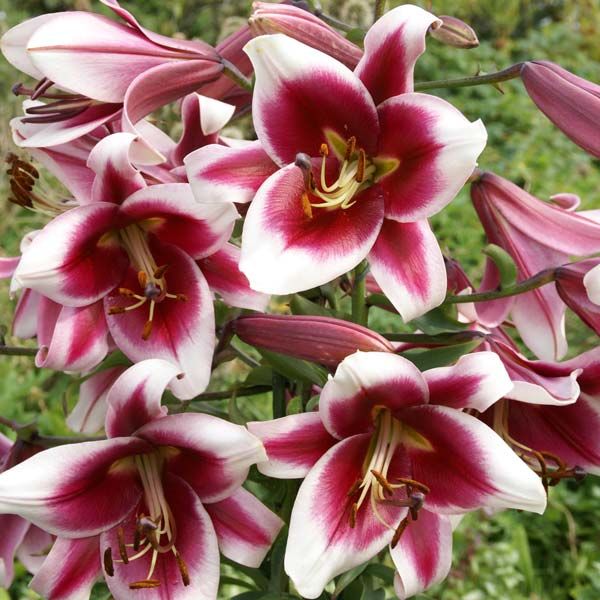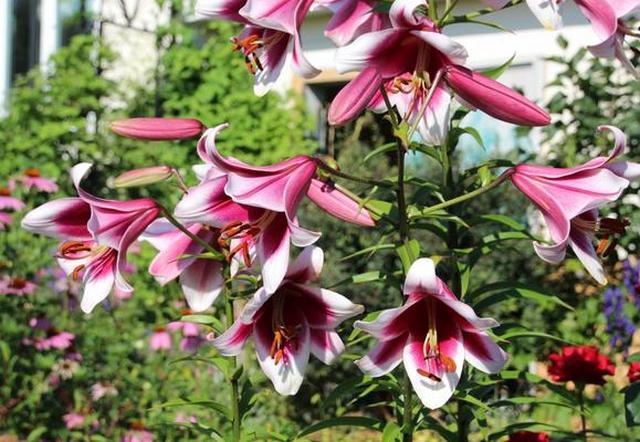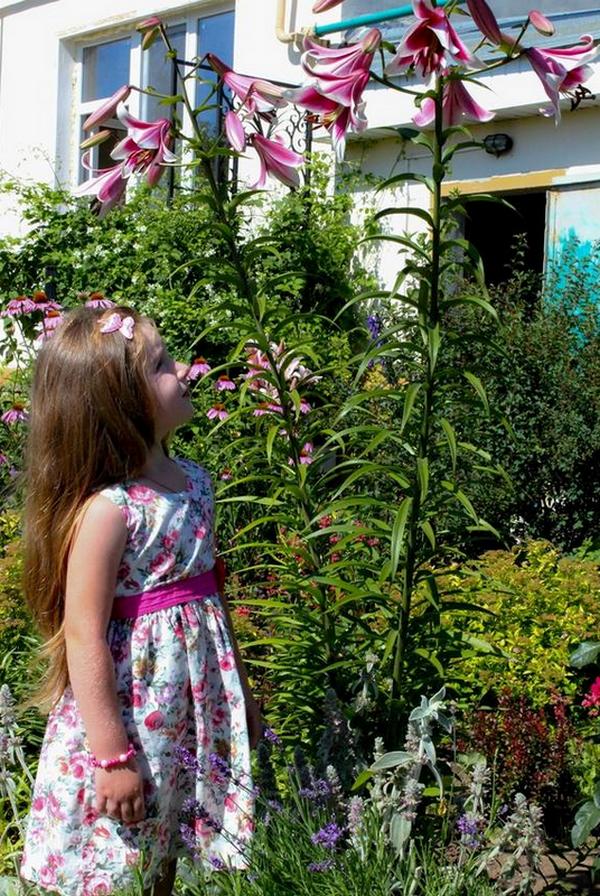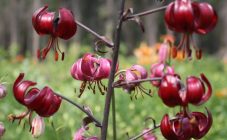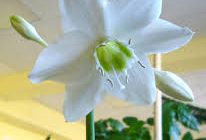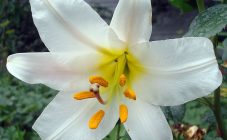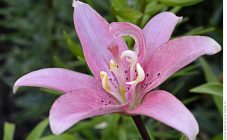Content:
Lily Friso (Friso) is unusual in many ways. It belongs to the group of OT-hybrids, which is the reason for its non-standard sizes, bright colors and enchanting aroma.
A little about lilies
Lily is a perennial herb. It has a round or ovoid bulb with a diameter of 2 to 20 cm, consisting of separate, tightly adjacent, open scales. The leaves of lilies are petiolate or sessile, up to 20 cm long (usually they are arranged in order of succession, sometimes whorled). The stem height can reach 250 cm.
Many varieties of lilies have single flowers, but inflorescences (umbrella-shaped and pyramidal) are also found. Their color can be very different, including striped, speckled or spotted on the inner side of the perianth. Plants belonging to this culture prefer warm and sunny, but slightly shaded areas of land with nutritious and loose calcareous (or sandy-clay) soil. In terms of popularity, they are only slightly inferior to roses.
When arranging the territory, lilies can be used as:
- individual lawn crops;
- hedge elements;
- crops for planting large areas.
The varieties, which are characterized by a small plant size, are used to decorate alpine slides.
Frizo variety: history of creation
Species lilies do not take root well in Russian gardens. Therefore, starting from the 19th century, breeders began to work on breeding hybrids that would not only feel comfortable in the climatic conditions characteristic of Russia, but would also have a more “spectacular” appearance.
Nowadays, already established cultures continue to be improved. This also applies to OT hybrids. The abbreviation "OT" is formed by the first letters of the names of the parent varieties used to breed new lilies: Oriental (Oriental) - Tubular.
The first OT hybrid developed by the Americans in 1957 was the Black Beauty variety. This culture grows up to 2 meters and is distinguished by the presence of fragrant dark cherry flowers with a diameter of 25 cm each.
Lily Friso (Friso Lily) is also an OT hybrid. The flowers of this variety have extraordinary beauty and bloom en masse in the second half of July. Their most powerful specimens grow in the southern regions.
Specifications
Frizo lilies grow and reproduce quite well, but due to their large size, they require more nutrition than other crops (with insufficient feeding, they bloom poorly and are small in size). When wintering in the middle lane, they only sometimes need light cover. Of the diseases for OT hybrids, only the viral mosaic is dangerous.
External parameters:
- height: up to 130 cm;
- flower shape: wide-chained, tubular (directed to the side);
- flower color: creamy white edges, bright crimson star-shaped middle, bright yellow throat;
- flower diameter: up to 19 cm;
- the shape of the petals: the tips are bent back, the edges are slightly wavy;
- nectary: yellow-green;
- anther: red;
- trunk: strong, dark green.
Although the declared plant height of the Frizo variety is 1.3 m, under favorable conditions it can reach 1.6 m and more. Because of this, this culture is often considered the "face" of lily trees.
In addition, Frizo has a pleasant rich aroma, partly inherited from the Trumpet Lilies, but more subtle. Due to the height of the plant, the smell spreads throughout the area, attracting bees and other pollinating insects.
Agrotechnical requirements
Lily Friso is an unpretentious frost-resistant crop that is immune to fungal diseases. The plant reproduces by means of bulbs (scales and children). But in order for breeding to proceed successfully, it is necessary to select high-quality planting material.
That is, you should choose bulbs with the following characteristics:
- fleshy;
- large;
- with undried scales.
Friso lilies are planted twice a year: in May and late August (early September). The bulbs are placed in holes 15-20 cm deep, placing them in open and slightly shaded areas (at a distance of 25-30 cm from each other). It is preferable that the soil is slightly acidic or neutral.
Friso does not tolerate transplants, so the hole under the bulb should be prepared correctly right away:
- place on a hill;
- make drainage (dry);
- fill with compost and humus;
- provide for the possibility of protecting the landing area from heavy rains.
As can be understood from the above, the lily OT Frizo hybrid reacts negatively to excess moisture, and during the first year of life it will need shelter. More mature plants do not require special care in the summer. Due to the strength of the stem, they do not need to be tied up and they can easily tolerate a short drying out of the soil (there is no need for frequent watering).
Features of year-round care
In the spring, Frizo "wakes up" relatively late, which often raises concerns among growers about how she survived the winter. But when the time comes, quite powerful shoots show up from the soil. At this time, you can feed the flower using a complex fertilizer, and carefully loosen the ground around it. You should not do this earlier, because in the absence of sprouts, it is easy to make a mistake with the place and damage the bulb.
The duration of the period from the moment of emergence to the opening of the buds is 105 days. Flowerbed Friso should not be cut immediately after the flower wilts. Even with the beginning of autumn, the bulb of this plant continues to absorb nutrients not only through the roots, but also through the leaves. Therefore, the most suitable month for cutting the stem is November. Until this moment, it is necessary, as before, to protect the plant during heavy rains from excess moisture.
It is not necessary to cover the bulb remaining in the ground for the winter. It is enough to mulch with oak leaves. OT hybrids have much less difficulties with wintering in the middle lane than the parental oriental lily. If the need to create a shelter still arises, it is recommended to use spruce branches for these purposes.
Advantages and disadvantages of Frizo versus other varieties
If we compare the Frizo lilies with other garden flowers, then their main disadvantages will be manifested in the following:
- exactingness to the level of soil moisture, its fertility and acidity;
- the need for more intense fertilizing than most other garden flowers;
- the need for antifungal treatment (it is recommended to carry it out in early spring).
But, of course, this culture has undeniable merits. This is manifested in the fact that she:
- does not need intensive watering (at the end of the flowering period, it can be completely stopped);
- survives short-term drought without problems even during a period of active growth;
- immune to most diseases typical of garden flowers.
If at the same time we remember about the description of the flowers of Frizo lilies, their aroma and size, it becomes easy to understand why for many Russian flower growers they have become so different. Plants of this variety, once on the site, never go unnoticed, since they are undoubtedly the brightest representatives of OT hybrids.
